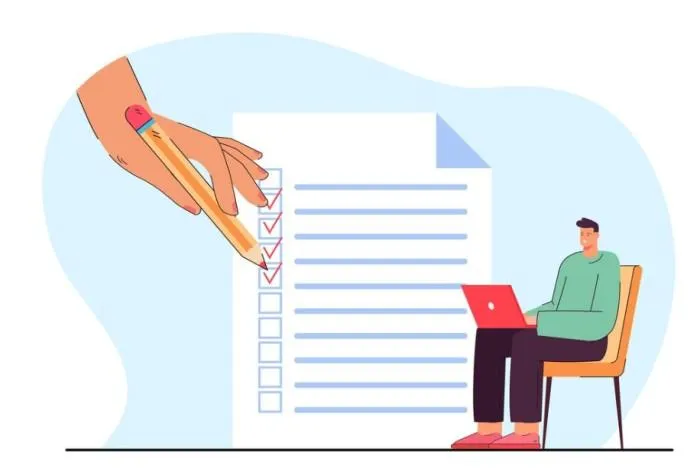Developers avoid bugs like the plague. But even the most skilled programmers will have them in their systems. They’re simply unavoidable parts of the job.
Since bugs are inevitable, the next best thing is efficient and accurate bug reporting. By compiling a thorough list of technical glitches, developers can address them quickly before they become bigger issues.
What is a bug report and why is it important? In this article, we answer these questions and show you how to create an effective bug report, courtesy of Feedbucket.
What Is a Bug? How Do You Detect One?

A bug is a pesky little thing that can lead to different types of problems. It can cause crashes, layout and design issues, and security vulnerabilities. It is a defect in design and undocumented behavior brought on by a coding error.
While they’re present at every step of the development process, you can use real user conditions to detect bugs in the design process. In addition, you can set quality standards so you know exactly which element can use improvement while conducting comprehensive software tests on real devices.
What Is a Bug Report? Why Is It Important?
Bugs need to be patched to prevent them from reoccurring. So, as soon as you spot a fault or malfunction in the design, you must report it via a bug report. A bug report is a document that allows you to provide the developer team with all the information they need to fix the issue before it sneaks into production and destroys the user experience.
Because a bug in a design process is all too common in software development, offering clear and concise reports can ensure effective communication and collaboration. In doing so, it speeds up the debugging process since developers who work on multiple projects don’t have time to guesstimate what’s wrong.
This ensures your product reaches the market on time without embarrassing errors.
How To Create Actionable Bug Reports

Here are key guidelines for writing a bug report that reduces miscommunications:
1. Have a Clear Title/Bug ID
Your title on the bug report must be short but not vague, succinct but not verbose.
Ideally, it should indicate the nature of the problem so that the developer has an idea about the type of problem they’re dealing with even before they open the report. It should help them understand the bug’s impact so they can effectively resolve it.
You can also assign it an ID to make the feedback loop easier to follow.
2. Add a Description
If your title cannot describe the bug, add a short summary to properly state the issue that needs fixing. Describe what the bug did, when it occurred, how it happened, the frequency of the issue, and other critical information.
3. Provide Detailed Environment Information
Different devices can interpret code differently, causing a website or app to perform poorly. As such, you should at a minimum include information about your device, browser, operating system, and resolution in every report. It will allow programmers to use the exact environment to detect and solve it.
Also, include relevant configuration information or other details you find important. Remember, the more information the developer has, the better.
4. Provide Visual Clues
Since the human brain processes images faster, including visual information — whether it’s screenshots, screen recordings, or videos — can go a long way in helping the developer visualize the problem. You can also use annotation tools to add short notes and comments about the bug.
5. Expectations vs. Reality
Things don’t always turn out the way we want them to. But the good news is, you can always fix it. When you create a report for the bug, add details about the output you expected when performing a specific task.
Mention what happened and how it affected performance. Be as specific as you can, so programmers can start investigating the issue, find ways to fix it, and improve future outcomes.
6. Share Steps To Reproduce the Bug
Regardless of the skill level of the development team, always assume you’re explaining the problem to someone who has no idea what you’re talking about.
Once you notice a bug, perform the same task again to see if it reoccurs, then share a short, easy-to-understand step-by-step guide on how to replicate it.
It can go something like this:
- Open the website on a mobile.
- Add XYZ product to cart.
- Clicking on “add to cart” does not add the product to the cart.
Outline the test steps clearly to guide the developer in locating the problem so they can understand what needs fixing.
7. Assign Each Bug a Priority
Some bugs create more havoc than others and should thus be an urgent priority.
Once you’ve located the bug, give it a priority rating to highlight its impact on the application. Classify it as:
- Normal: can be left on hold to give preference to more disruptive ones
- Minor: a loss of functionality
- Major: needs to be fixed ASAP to ensure it doesn’t impact the user experience
Bug Reporting: Good Report Vs. Bad Report
A good bug report gives the developer all the information they need to address the problem promptly and efficiently. A poor one causes confusion, leads to incorrect bug priority detection, and increases the development and testing time.
Here are two examples of bug reports:
What Your Bug Report Should Look Like
| Bug Title | Unable to check out a free gift with the product |
| Reporter | Dan S |
| Submitted on | 14/12/2023 |
| Description | I’m trying to add a product from the brochure to the cart. However, the complimentary gift that comes with order values exceeding $85 is not showing up in the cart. Since my order meets the minimum order value requirement, I should be able to check out both. |
| Steps to reproduce | Click on the offer page, then select items worth $85 to the cart. |
| Expected result | The cart should show the products and gift pack. |
| Actual result | The cart is only showing the product. |
| URL | www.example.com/productcatalog/bestsellers |
| Media | View screenshot |
| Environment details | System: MacOS Catalina, Browser: Chrome 119, Device: Desktop, Resolution: 1920x1080 |
| Priority | Minor |
What To Avoid
| Bug Title | Why am I not able to check out free gifts? |
| Reporter | Martha S. |
| Submitted on | 14/12/2023 |
| Description | I’m not getting a free gift with the product. Why is this happening? Fix this ASAP! |
| Priority | Urgent |
Which option do you think will provide the developer with the information they need to solve the bug?
Bug Report Best Practices
Here are some tips that will help you create an effective bug report:
- Deliver the report in a respectful tone while focusing on facts. Be suggestive, not authoritative. Remember, you’re all working towards the same goal.
- Cover only one issue in one bug report to avoid misunderstandings. Include the bug’s error message (if applicable) to make it easier for the developer to identify, understand, and debug common problems.
- Check whether the bug has already been reported to avoid duplication. Look for similar keywords, then add new comments to keep similar issues together.
Once you’re done, give it a once-over to ensure you’ve got all your bases covered. Be sure to include your contact information so the developer can get back to you.
Make Bug Reporting Easier With Feedbucket
Bug reporting tools like Feedbucket allow you to write and submit bug reports without leaving the website. This makes it easier to provide developers with crystal-clear context—complete with screenshot annotations and screen recordings. They’ll know exactly where the problem lies and will be able to address issues better.
Using the tool doesn't require extensions or registrations. Hence, you get hassle-free access to tools that will help launch your website on time and bug-free.
Conclusion: Feedbucket Makes Bug Reporting a Breeze
Now that you know what is a bug report in software testing and how to write one that your development team will appreciate, get down to business with Feedbucket. We have a full set of features that are guaranteed to make your workflow smoother and easier.
